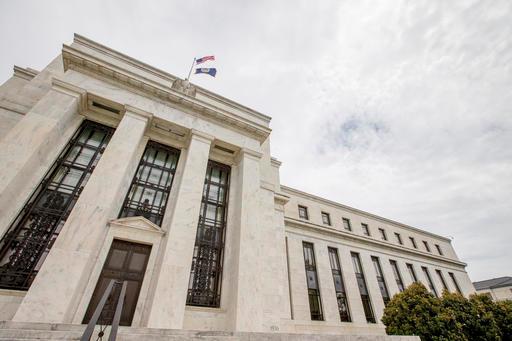Will the Fed cut interest rates during its meeting this week?
The Federal Reserve kicked off its two-day policy-setting meeting on Tuesday, during which it’s widely expected to leave interest rates unchanged as it opens the door for a cut in July – even as the market clamors for a drop in borrowing costs.
Most economists anticipate the U.S. central bank will keep the benchmark federal funds rate at 2.25 percent to 2.5 percent.
“A rate cut is unlikely since there has not been enough time for the Fed to adequately signal that it is coming,” said Dan North, chief economist at Euler Hermes North America. “However, it is very likely to happen in July.”
At their last meeting, Fed policymakers voted unanimously to leave interest rates unchanged, while signaling they would be “patient” with monetary policy moving forward. Now, economists will be closely watching policymakers to see whether they drop the word “patient” from their language -- particularly after Chairman Jerome Powell said the Fed was prepared to act as it monitors the global trade outlook and muted inflation.
“We do not know how or when these issues will be resolved. We are closely monitoring the implications of these developments for the U.S. economic outlook and, as always, we will act as appropriate to sustain the expansion, with a strong labor market and inflation near our symmetric 2 percent objective,” Powell said during a speech at the beginning of June.
Last week, the Bureau of Labor Statistics released its May inflation data, revealing that the Consumer Price Index for All Urban Consumers remained relatively stagnant, with prices up just 0.1 percent. It was the smallest increase in inflation since January.
The PCE inflation -- the Fed’s preferred measure because it excludes food and energy prices -- rose a seasonally adjusted 0.31 percent in April from March and 1.5 percent from a year earlier, well below the Fed’s target range of 2 percent.
But North speculated that the Fed will wait to move interest rates until after the G-20 meeting, which is set to take place at the end of June, to see whether the U.S. and China move closer to reaching a trade agreement.
“A move this week could also make it look like the December hike was a mistake,” he said.
Futures have priced in about a 22 percent chance of a rate reduction in June and roughly an 84 percent chance of a cut in July. In part, that’s because economic data remains relatively strong: Although job creation slowed in May -- the U.S. added a less-than-expected 75,000 -- unemployment is still at the lowest level since 1969. And in the first quarter of 2019, the economy expanded by 3.1 percent, brushing off the effects of the longest government shutdown in history.
CLICK HERE TO GET THE FOX BUSINESS APP
“The results of the meeting are likely to show that while the Fed is unlikely to ease now, it would do so if economic and financial conditions worsen in coming months,” said David Berson, Nationwide’s chief economist.

